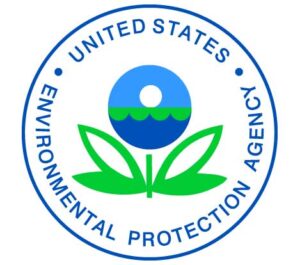
U. S. Environmental Protection Agency
To: Concerned Citizens Locally & Nationally, September 20, 2021
Tune in this Thursday, September 23, from 6 to 8 p.m. when the US Environmental Protection Agency (EPA) and the WV Department of Environmental Protection (DEP) will provide information and answer questions about ethylene oxide (EtO) air emissions in the Kanawha Valley coming from chemical plants located in Institute and South Charleston.
Ethylene oxide is a potent carcinogen emitted as a flammable, colorless gas by chemical/petrochemical manufacturers and certain sterilizers. This pollutant – combined with all other emitted carcinogens – exposes communities to extremely high cancer risk and other threats. Based on the latest data EPA has published, there are over 100 communities nationwide with unacceptable cancer risk from toxic air emissions, driven primarily by ethylene oxide emissions. The Kanawha Valley makes it into the EPA’s top 10 on this list.
EPA has known about this problem since at least 2018 – when it last released its National Air Toxics Assessment. It is shocking that EPA is only now holding community meetings about facilities that have been causing or contributing to unacceptable health threats for years. It’s time for strong, meaningful EPA action, including stronger rules, and we want to see that start now.
EPA data show that EtO and other toxic air pollution disproportionately threatens communities of color, particularly African American or Black, Hispanic or Latino, and low-income communities. Children face increased vulnerability and risk due to toxic exposure in early life and EPA has underestimated the health risk from EtO pollution by ignoring or undercounting certain threats, particularly increased risk during the prenatal stage. Residents living near and across the Kanawha River from the Institute and South Charleston chemical plants have among the highest risks of cancers of the white blood cells and breast cancer in females. EtO is a mutagen meaning children may be more susceptible.
Please plan to attend this public meeting to ask questions and find out more about what the EPA plans to do to protect and inform residents of the Kanawha Valley.
Questions and talking points are available here.
More information and a link to join the meeting can be found here.
The EPA ‘Community Announcement’ about the meeting is here.
West Virginia Environmental Council
P.O. Box 1007, Charleston, WV 25324
CONTACT: info@wvecouncil.org
>>>>>>………………>>>>>>………………>>>>>>
SEE ALSO: Catch up on PFAS, Endocrine Disruption, and Shale Gas Development
From Raina Rappel, Environmental Health Project, September 20, 2021
We’re co-hosting a webinar with the SWPA Environmental Health Project (EHP) and wanted to make sure you had a chance to register. Also, this is right on topic for the campaign accelerator program starting next week (details below).
PFAS, Endocrine Disruption, and Shale Gas Development
Tuesday, September 21st, at 7:00 pm EST.
Dusty Horwitt, J.D., will present on PFAS in Oil and Gas Extraction, explaining how these chemicals were not known to be used in fracking until PSR released his report in July.
Katie Pelch, Ph.D., will present on PFAS: A Non-stick Nightmare, discussing the health impacts related to PFAS with a focus on endocrine disruption, as well as regulation and exposure mitigation.
EHP’s Public Health Manager, Makenzie White, will moderate the discussion after the presentations.
If you have not already done so, you can register HERE for the live event and access to the recorded webinar
